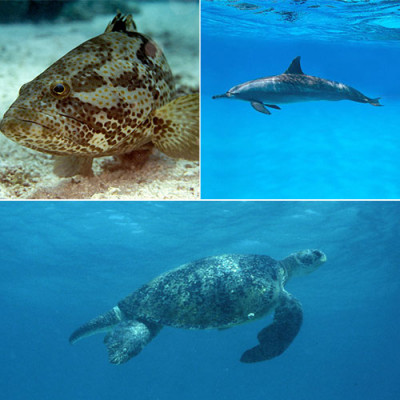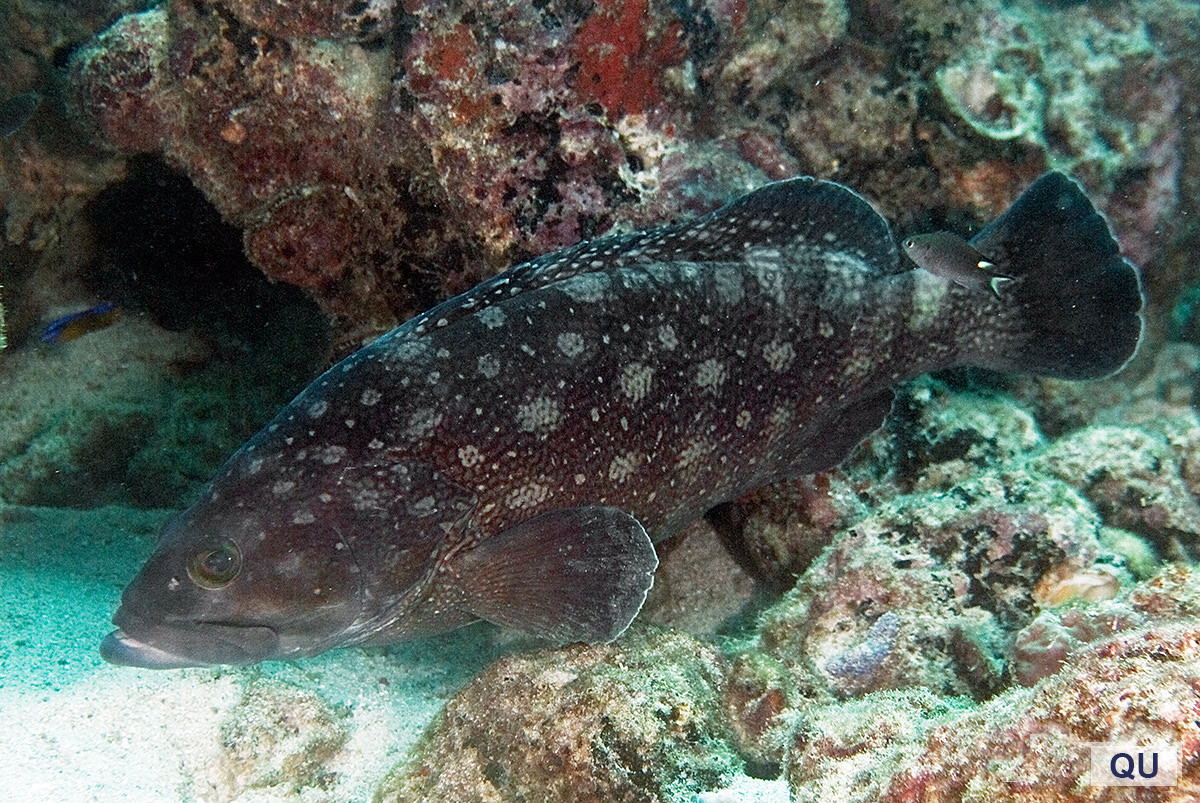Name: Whitespotted Grouper
Local name: Bertama
Scientific name: Epinephelus coeruleopunctatus
Classification: Class: ray-finned fishes; Order: perch-likes; Family: groupers (Serranidae)
Synonym: Epinephelus flavocaeruleus
Size: It usually attains about 60 cm and the maximum length on record is 76 cm.
Habitat:
The species inhabits rocky and coral-rich areas, usually in or near caves where it hides. Juveniles are also found in tide pools. It is solitary and feeds on fish and crustaceans.
Distribution:
The Whitespotted Grouper is widely distributed in the Indo-Pacific, from eastern and southern Africa to Fiji, but does not occur in the Red Sea.
Conservation status:
The IUCN Red List of Threatened Species classifies it as Least Concern (LC) in both the global assessment and the regional assessment for the Arabian Gulf. It is caught with hook-and-line and in traps.
Description:
The Whitespotted Grouper is recognized by the following combination of characters: the dorsal fin has 11 spines and 15 – 17 soft rays, the anal fin has eight soft rays, and the hind margin of the caudal fin is rounded. Body and head and fins are of brownish grey to charcoal color with irregular white spots and blotches of variable size.








